Discussing the strong state of NASA…
A safe return from the space station…
And testing critical hardware for a future mission…
A few of the stories to tell you about – This Week at NASA!
Budget Request Supports a Strong State of NASA
On March 11, during the annual State of NASA address at our headquarters in Washington, agency leadership talked about how the Biden-Harris Administration’s Fiscal Year 2025 Budget request supports NASA.
The budget will fund NASA’s ability to help America maintain its leadership role in space exploration, scientific discovery, cutting-edge technology, climate data, next-generation aeronautics, and inspiring future leaders of our Artemis Generation.
Learn more at nasa.gov/budget.
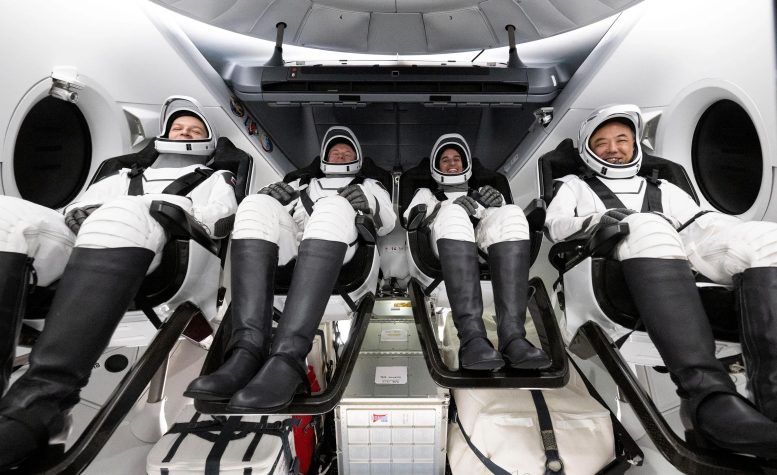
Roscosmos cosmonaut Konstantin Borisov, left, ESA (European Space Agency) astronaut Andreas Mogensen, NASA astronaut Jasmin Moghbeli, and Japan Aerospace Exploration Agency (JAXA) astronaut Satoshi Furukawa are seen inside the SpaceX Dragon Endurance spacecraft onboard the SpaceX recovery ship MEGAN shortly after having landed in the Gulf of Mexico off the coast of Pensacola, Florida, Tuesday, March 12, 2024. Moghbeli, Mogensen, Furukawa, and Borisov are returning after nearly six months in space as part of Expedition 70 aboard the International Space Station. Credit: NASA/Joel Kowsky
NASA’s SpaceX Crew-7 Returns to Earth
Also on March 11, the members of NASA’s SpaceX Crew-7 mission, including NASA astronaut Jasmin Moghbeli, made preparations to close out their time on the International Space Station.
After undocking from the orbital laboratory in their SpaceX Crew Dragon spacecraft, the four-person international crew safely splashed down the next day off the coast of Pensacola, Florida. Crew-7 spent 199 days in orbit.
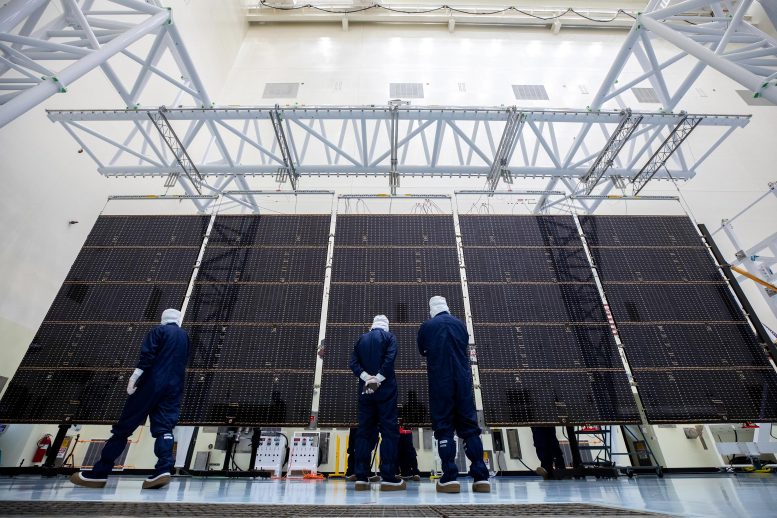
Technicians examine the first of two fully extended five-panel solar arrays built for NASA’s Europa Clipper suspended on a support system called a gravity offload fixture during inspection and cleaning as part of assembly, test, and launch operations inside the Payload Hazardous Servicing Facility at the agency’s Kennedy Space Center in Florida on Wednesday, March 6, 2024. Credit: NASA/Ben Smegelsky
Testing Europa Clipper’s Solar Arrays
Technicians at NASA’s Kennedy Space Center recently fully extended the first of two five-panel solar arrays for the agency’s Europa Clipper spacecraft. The 46.5-foot arrays also will be inspected and cleaned as part of assembly, test, and launch operations.
Targeted for launch in October moon Europa, which is believed to have a global ocean beneath its icy crust that has more water than all of Earth’s oceans combined.
Scientists have studied our solar system’s neighborhood pretty well, but much of the galaxy remains shrouded from view. NASA’s Nancy Grace Roman Space Telescope will peer through thick bands of dust to reveal parts of our galaxy we’ve never been able to explore before, thanks to a newly selected galactic plane survey. Credit: NASA’s Goddard Space Flight Center
Roman Team Selects Survey to Map Our Galaxy’s Far Side
NASA’s Nancy Grace Roman Space Telescope team has announced plans for an unprecedented survey of the plane of our Milky Way galaxy. It will look deeper into this region than any other survey and map more of our galaxy’s stars than all previous observations combined.
Roman’s combination of a large field of view, crisp resolution, and the ability to peer through dust make it the ideal instrument to study the Milky Way.
The Roman Space Telescope is targeted for launch by May 2027.
That’s what’s up this week @NASA.

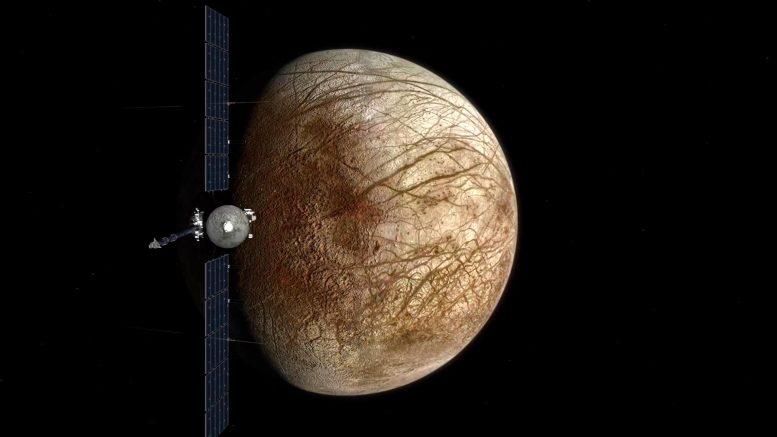





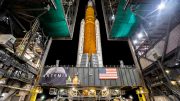
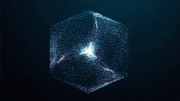

Be the first to comment on "This Week @NASA: SpaceX Crew-7 Returns to Earth, Europa Clipper’s Solar Arrays, Mapping Our Galaxy’s Far Side"